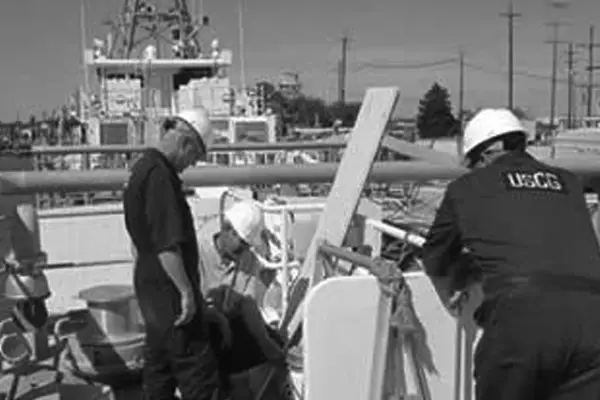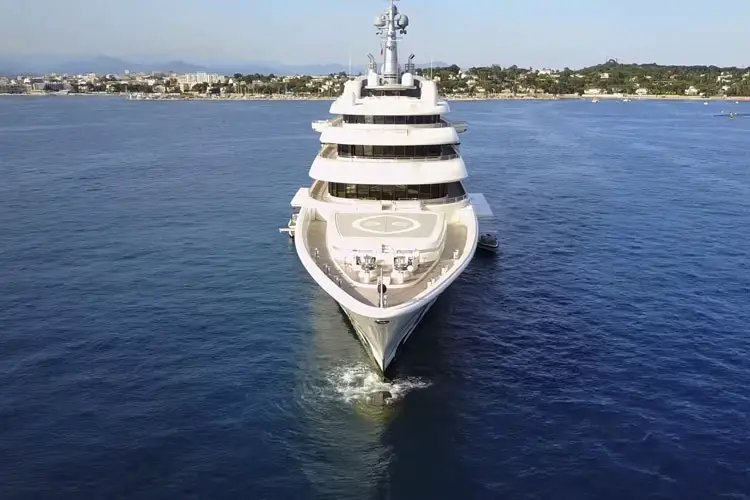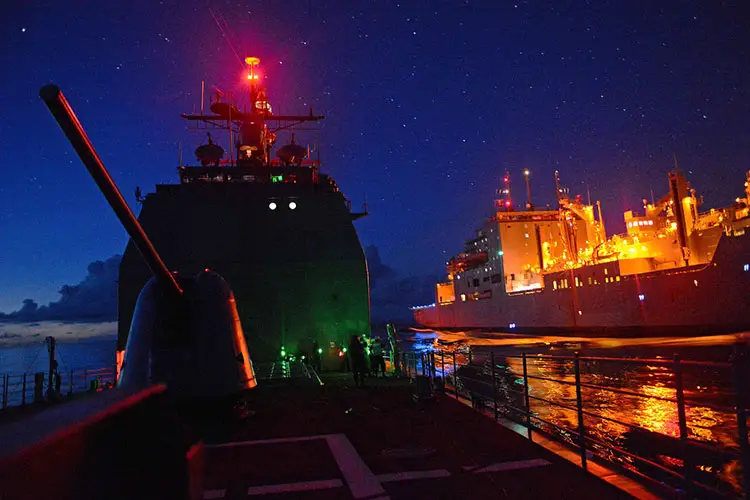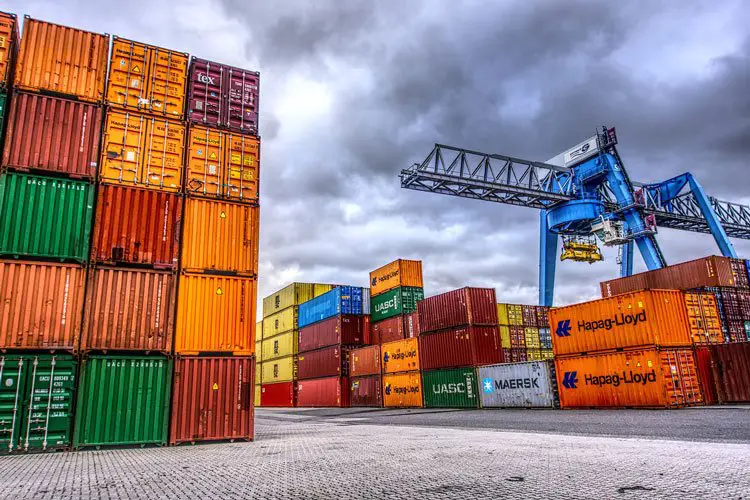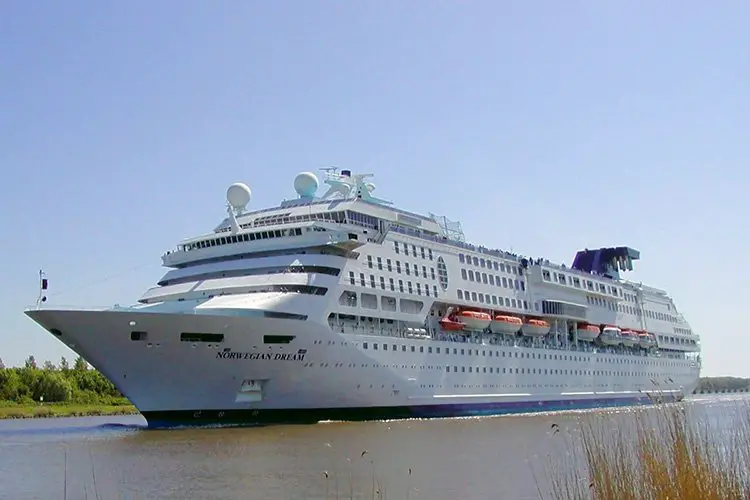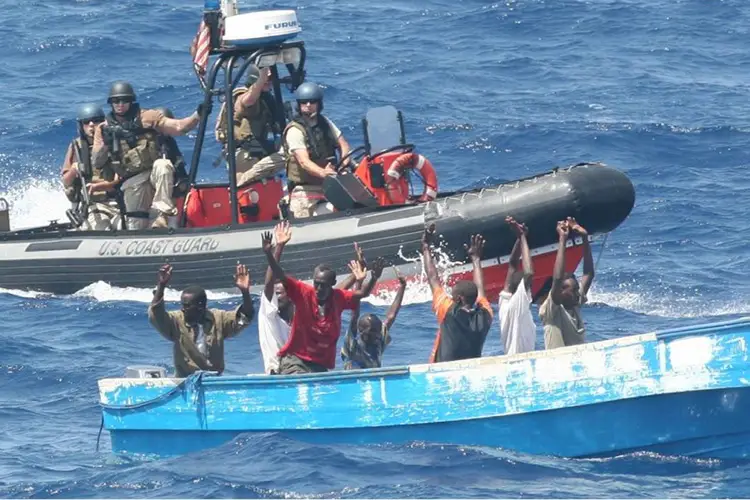What Is Baltic Mooring?
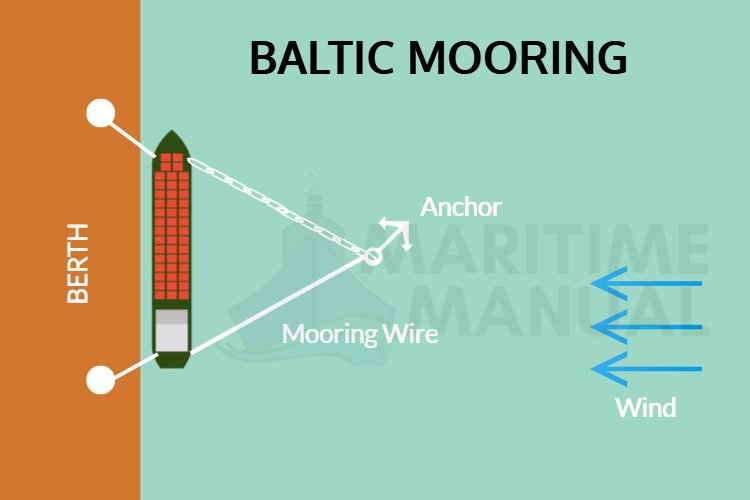
Baltic mooring is a method of mooring done when there are strong onshore winds in which the vessel is berthed alongside (lengthwise) a quay using the ship’s anchor and onboard cables to secure it safely and reduce the impact.
In Ancient times, the size of vessels along with the transportation of goods was limited. The size of vessels being small, simple and light in weight, it was easier for the ships to land/berth to the shores or even to the places where the sea waves couldn’t reach. Therefore, the loading and unloading of the goods/cargo were much easy.
Later in the ’50s and ’60s as the transportation of goods through waterways increased, the size of vessels also increased leading to the construction of large, heavy, and advanced ships for which it was not that manageable to land to the shores. Hence berthing and mooring were invented.
A berth is for ships, vessels and other water wagons like parking is for cars and trucks. The operations like safe piloting of ship, loading, and unloading of goods, etc works are carried out here.
What is Mooring?
Mooring is the method used to land ship to the berth i.e., taking it to the berth where it can be safe and stable during loading/unloading of goods or even before/after that. Mooring can also be done amid the sea. This also includes fixing the vessel to some other floating vessel/object for loading/unloading goods, etc works.
So basically, Mooring is a procedure used to anchor a ship/vessel to berth or another fixed/floating object. The main objective of mooring is to withstand all the forces like a storm, heavy winds, tidal currents, tides, etc, and keep the vessel safe from the before-mentioned external forces.
Mooring is facilitated by the use of the following equipment:
a) Anchor – A heavy hook/object tied to a rope/chain which stands firm and conveys stability.
b) Jetties – Strong pier provided along berth/harbor.
c) Quays – An extended platform along the sea, and other water bodies for loading/unloading operations.
d) Inclinometer – Used to determine the angle of inclination while mooring.
e) Chain – A succession of rings/irregular articles of metal or any other material used for securing/affixing.
f) Shackles – It is a piece of fastening equipment (similar to handcuffs; generally, in U-shape).
g) Bosun’s Chair – A plank/chair provided, backed with strings/ropes to facilitate the upward and downward movement of a person sitting on it (Just like swing).
h) Rope, etc.
There are several types of mooring systems out of which the most common ones are: – Single buoy Mooring, Multi-buoy Mooring, Anchor Mooring, Mediterranean Mooring and, Baltic Mooring, etc.

What is Baltic Mooring?
Incase of Baltic seaports, where strong onshore winds are present, it becomes challenging for the pilot/master to berth the ship. The strong winds make the berthing operation uncontrollable and sometimes, the ship also starts moving rapidly with the force of the wind.
By analyzing the normal approach, the strong wind blowing towards the berth can lead to the banging of the ship with berth causing damage to the berth and sides of the ship.
Hence to counteract this damage and have a safe, smooth and, slow mooring, the pilot uses the method of Baltic Mooring by utilizing mooring structures/equipment available onboard (i.e. When there is a strong wind at the port and a boat must be moored without tugboats to a dock not resistant to impact, Baltic mooring is used).
Baltic Mooring is a method of mooring a ship such that a ship is berthed along the berth/quay (i.e. lengthwise) by engaging the stern mooring by shackling it to offshore anchor cable in the region of Ganger Length.
Ganger length is the length of the anchor cable set (It is considered as the length between the crown of the anchor, shackle, and the first joining shackle of the cable). While approaching the berth, the offshore anchor is positioned and the weight on the cable and the stern mooring tend to hold the vessel just around the quay/berth.
- Before commencing with Baltic mooring, a person with the help of bosun‘s chair is lowered. After dropping anchor below the hawse pipe, he connects a 30mm wire from the poop deck on the offshore side from the outside of the ship’s hull, the gangway, and the pilot ladder, etc to the anchor chain (where the first shackle begins).
- This arrangement is generally pre-arranged so that when the boat approaches near to the middle of the berth at some convenient distance (usually 70-100 feet from berth), the anchor is dropped keeping trickle headway so that the anchor holds.
- This arrangement is regularly done to facilitate proper mooring which leads to the advancement of the ship in the normal plane of berth (as it connects bow (front end) as well as stern (back end) of the ship) and prevents the tilting or abrupt/inclined movement of the ship.
- Also, the unberthing of the ship takes place in a controlled manner despite strong winds/storms.
- The anchor is perpetually positioned to the opposite side of the berth so, the fast movement of the ship due to strong winds is slowed down preventing accidents.
While the on-shore wind drives the vessel towards the berth, as soon as the ship is close; springs, head, and stern lines are departed ashore with the heaving lines, and the range of the anchor is adapted accordingly to bring the ship gently alongside the berth causing proper and regulated mooring of ship.
Similarly, the unberthing is also facilitated by the wired anchor arrangement which stands strong in the Baltic sea.
Advantages of Baltic Mooring
- It is said to be the most helpful and reliable option for mooring on stormy days.
- The Destruction of the berth and sides of the ship due to collision can be avoided.
- Prevents hasty and inclined bumping/landing of the ship.
- Helps in stabilizing the ship even in the middle of the sea for parallel loading/unloading operations with another ship/vessel.
- Prevents free movement of the ship on the water when around shore/jetty/quay/berth, etc.
- Expedites the Loading and Unloading operations of goods/cargo.
- Preserves the ship and cargo from external forces like a storm, heavy winds, tides, sea waves, tidal currents, etc.
- Berthing and Unberthing of the ship take place gradually in a controlled manner.
- The most secured option for mooring the ship in the Baltic sea.
Disadvantages of Baltic Mooring
- A preliminary arrangement has to be done.
- The person should be skilled or at least acknowledged with this technique.
- The direction of winds/storms should be examined.
- Any carelessness can lead to damage to the ship/cargo/berth.
- The equipment used in the operations has less life due to corrosion and other effects.
- On-shore winds tend to damage the shell of the ship/vessel.
- Equipment used is seldomly uneconomical.
- Equipment employed in this operation is not ordinary and should be handled with care or else can lead to severe injury/loss of life to the person handling it.
- The pilot should be proficient.
Precautions to be taken while Baltic mooring operations are performed
- Before starting with mooring operation, always analyze the direction and speed of wind/storm/tides, etc.
- Equipment should be handled with care.
- People involved in this operation should have proper knowledge about it.
- Safety checks of the equipment should be carried out regularly.
- Mooring lines should be of the same size and material. If not possible, at least the Chains, Breast lines, spring lines, head lines and, stern lines should not be of different materials or different sizes. Avoid it as far as possible as it can be dangerous.
- No extra person (Other than people involved in mooring) should be present at the mooring station/deck.
- Consideration of Weather and atmospheric conditions.
- Routine maintenance of equipment and system to ensure smooth working and prevent accidents.
- Always keep an eye on the load befalling on mooring lines.
- Pre-arrangement should always be ready before reaching out near the berth.
Terms used
- Vessel: A craft used in water bodies for sailing which is larger than a simple rowboat (a Ship or a large boat).
- Grapnel: A grappling hook that adheres firmly just like an anchor.
- Stern: Backmost part of the ship.
- Bow: Frontmost part of the ship.
- Breast lines: A Mooring line securing perpendicular with Jetty.
- Spring lines: A Mooring line attached diagonally to jetty/berth.
- Head lines: A Mooring line attached from the bow to jetty/berth at an angle of 450.
- Stern lines: A Mooring line attached from the stern to jetty/berth at an angle of 450.

